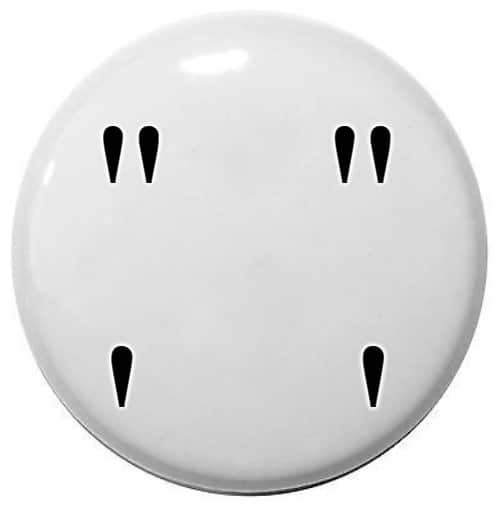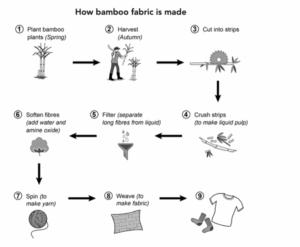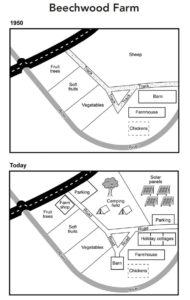Quotation marks are mainly used to set off the exact words spoken or written by others. They also have some other important uses, which are mentioned below.
When you want to include someone else’s exact words in your writing, use quotations to set off the direct speech.
Examples:
The mechanic said, “I’ll fix the car in five days.“
He shouted, “Watch out!“
Note 1: We use a comma before the first quotation mark when using quotations for direct speech.
Note 2: We use quotations when the text is short (run-in quotations). If the quoted text or speech is long, it is best to set it off from the rest of the text by putting it in a separate paragraph. This paragraph, which only includes the quoted material, is called a block quotation.
Examples:
Run-in quotation: Tony entered the room with a grin on his face and said, “You’ll never guess what I’ve done today.“
Block quotation:
At his Stanford commencement address, Steve Jobs said,
It started before I was born. My biological mother was a young, unwed college graduate student, and she decided to put me up for adoption. She felt very strongly that I should be adopted by college graduates, so everything was all set for me to be adopted at birth by a lawyer and his wife. Except that when I popped out, they decided at the last minute that they really wanted a girl. So my parents, who were on a waiting list, got a call in the middle of the night asking, “We have an unexpected baby boy; do you want him?” They said, “Of course!” My biological mother later found out that my mother had never graduated from college and that my father had never graduated from high school. She refused to sign the final adoption papers. She only relented a few months later when my parents promised that I would someday go to college.
Note 1: As you can see, the block quotation is not surrounded by quotation marks, but it is indented and doubled-spaced from the rest of the text.
Note 2: It is OK to include a run-in quotation in a block quotation.
Question: How long should the text be to be put in a block quotation?
Answer: Different writing styles suggest different answers to this question. Some require at least four lines, some others at least 100 words. Choose your style and stick to it. For instance, The Chicago Manual of Style suggests at least 100 words (six lines or more) as a general rule.
When you refer to a specific word or phrase, use quotations to set it off.
Example:
-The idiom “turn a blind eye to something“ means to deliberately ignore something that you know should not be happening.
Use scare quotes around a word or phrase to show that it is being used in a special way or in a way that may not be correct or true.
Example:
Many people think that John speaks “the truth.“
Explanation: In this example, the quotation marks tell us that the speaker/writer doesn’t really believe that John speaks the truth.
When you insert someone’s nickname between their first name and last name, make sure to set it off by quotations.
Example:
Dwayne “The Rock“ Johnson is a famous American actor.
Question: Do we capitalize the text inside the quotations?
Answer: It depends on the text. If the text inside the quotations is a complete sentence, you should capitalize it; if it is a word, phrase, or part of a sentence, you shouldn’t. Note that proper nouns are always capitalized.
Examples:
- He said, “Today was a big day for our company.”
- I asked him what he does for a living, and he just said, “truck driver.”
- She shouted, “James!“
Note: If the quoted sentence is split into two parts, we still start the first part capitalized.
Example:
“Today,” he said, “was a big day for our company.”
Question: Do other punctuation marks go inside the quotation marks?
Answer:
- Punctuation marks that come before the quoted text never go inside:
Example:
Jimmy asked, “What is the problem?”
- In the American writing style, commas and periods after the quoted text go inside even if they are not part of the quoted text. However, in the British writing style, commas and periods that are not part of the quoted text go outside.
Examples:
American writing style: “Watching too much TV,” the scientist said, “has adverse effects on children’s developing brains.”
British writing style: “Watching too much TV“, the scientist said, “has adverse effects on children’s developing brains.”
- Other Punctuation marks (other than commas and periods) are placed outside the quotation marks if they are not part of the quotation.
Examples:
When the punctuation mark is part of the quotation:
– He asked, “What time is it?“
When the punctuation mark is not part of the quotation:
– Was it James that said, “The movie was awesome”?
Question: What to do if we want to quote within a quote?
Answer: In such cases, use single quotation marks for the second quote.
Example:
My classmate told me, “the math teacher said, ‘the exam is canceled.‘ “
Note: If you want to include a third quote within the second quote, use double quotation marks.
Follow us on YouTube for more tips and resources.





